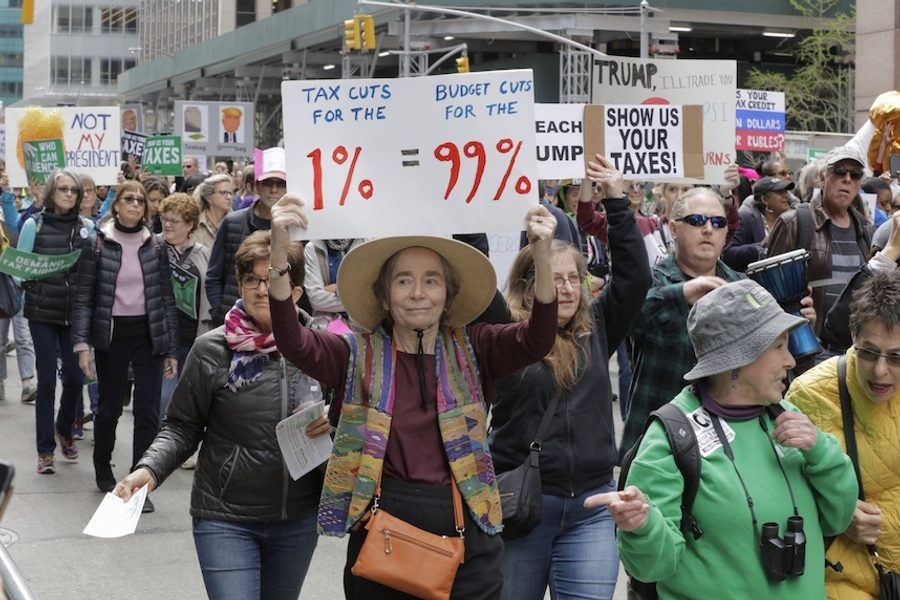9 Stats That Show the Tax Code Favors the Ultra-Rich
Without dramatic tax reform, inequality will continue to skyrocket.
Izii Carter

Economic inequality in the United States is the highest it’s been in the last 50 years. In recent decades, the richest 1% of Americans have accumulated nearly 40% of the country’s wealth. The net worth of just three individuals — Jeff Bezos, Bill Gates and Warren Buffett—dwarfs that of the entire bottom 50% of Americans. And it only seems to be getting worse.
How did we get here? In a new book The Triumph of Injustice: How the Rich Dodge Taxes and How to Make Them Pay, authors Emmanuel Saez and Gabriel Zucman suggest the answer has much to do with changes to the tax code that have reduced the burden of taxation on America’s wealthiest groups and made it easier than ever for corporations to evade paying their dues.
Policy proposals from 2020 hopefuls like Elizabeth Warren and Bernie Sanders are seeking to change that. Warren’s “Ultra-Millionaire Tax” would impose a 2% tax rate on net worth in excess of $50 million, which becomes a 3% tax rate beyond $1 billion. In other words, any wealth between $50 million and $1 billion would be taxed at 2%, but the 1,000,000,001st dollar (as well as anything beyond that) would be taxed at 3%. Sanders’ “Tax on Extreme Wealth” plan goes even further by instituting a 1% tax rate on net worth above $32 million that rises steadily to 8% on all wealth over $10 billion. Warren’s campaign claims her plan would bring in $2.75 trillion in revenue. Sanders’ would likely raise even more, which he proposes to use as funding for his affordable housing plan, universal childcare, and some of Medicare for All.
Here are nine statistics from The Triumph of Injustice that show how tax injustice has contributed to inequality in America and the urgent need for reform:
- 52% — U.S. corporate tax rate in 1952
-
21% — U.S. corporate tax rate after Trump’s tax law
-
0% — Corporate tax rate in Bermuda
-
60% — Portion of profits U.S. multinationals collectively book in low-tax countries like Bermuda and Ireland
-
$25,000 — FDR’s proposed “maximum income” in 1942 (about $400,000 today), above which income would be taxed 100%
-
$1,500,000 — Average income of the top 1% of American earners today
-
37% — Current top marginal tax rate in America, 20% below the historical average
-
2018 — First year in history that America’s top 400 richest individuals paid less in taxes than the bottom 50% of earners
-
25% — Fraction of unpaid taxes owed by the ultra-rich, almost 15% more than for other income levels







